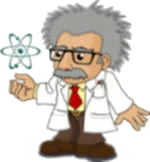Equilateral 81142
The rotating body was created by rotating an equilateral triangle with a side length of a=2 cm around one of its sides. Calculate the volume of this rotating body.
Correct answer:

Tips for related online calculators
Need help calculating sum, simplifying, or multiplying fractions? Try our fraction calculator.
Tip: Our volume units converter will help you convert volume units.
See also our right triangle calculator.
Tip: Our volume units converter will help you convert volume units.
See also our right triangle calculator.
You need to know the following knowledge to solve this word math problem:
- algebra
- expression of a variable from the formula
- arithmetic
- square root
- solid geometry
- cone
- body volume
- planimetrics
- Pythagorean theorem
- right triangle
- basic functions
- reason
- numbers
- fractions
Units of physical quantities:
Grade of the word problem:
Related math problems and questions:
- Calculation 29971
 Cylinder height and radius calculation The rectangle ABCD | AB | is given = 8 cm, and | BC | = 4 cm. Determine the height and radius of the cylinder created by rotating the rectangle around the line AB.
Cylinder height and radius calculation The rectangle ABCD | AB | is given = 8 cm, and | BC | = 4 cm. Determine the height and radius of the cylinder created by rotating the rectangle around the line AB. - Resulting 4446
 A square with a side length of 3 cm rotates around its diagonal. Calculate the volume and surface area of the resulting body.
A square with a side length of 3 cm rotates around its diagonal. Calculate the volume and surface area of the resulting body. - Prism - eq triangle
 Calculate the volume and surface of the prism with the base of an equilateral triangle with side a = 4cm, and the body height is 6cm.
Calculate the volume and surface of the prism with the base of an equilateral triangle with side a = 4cm, and the body height is 6cm. - Perpendicular 35183
 Calculate the surface and volume of a vertical prism if its height h = 18 cm and if the base is an equilateral triangle with side length a = 7.5 cm.
Calculate the surface and volume of a vertical prism if its height h = 18 cm and if the base is an equilateral triangle with side length a = 7.5 cm.
- Axial section
 Calculate the volume and surface of a cone whose axial section is an equilateral triangle with side length a = 18cm.
Calculate the volume and surface of a cone whose axial section is an equilateral triangle with side length a = 18cm. - The parabolic segment
 The parabolic segment has a base a = 4 cm and a height v = 6 cm. Calculate the volume of the body that results from the rotation of this segment a) around its base b) around its axis.
The parabolic segment has a base a = 4 cm and a height v = 6 cm. Calculate the volume of the body that results from the rotation of this segment a) around its base b) around its axis. - Conical area
 A right-angled triangle has sides a=12 and b=19 at the right angle. The hypotenuse is c. If the triangle rotates on the c side as an axis, find the volume and surface area of the conical area created by this rotation.
A right-angled triangle has sides a=12 and b=19 at the right angle. The hypotenuse is c. If the triangle rotates on the c side as an axis, find the volume and surface area of the conical area created by this rotation.
